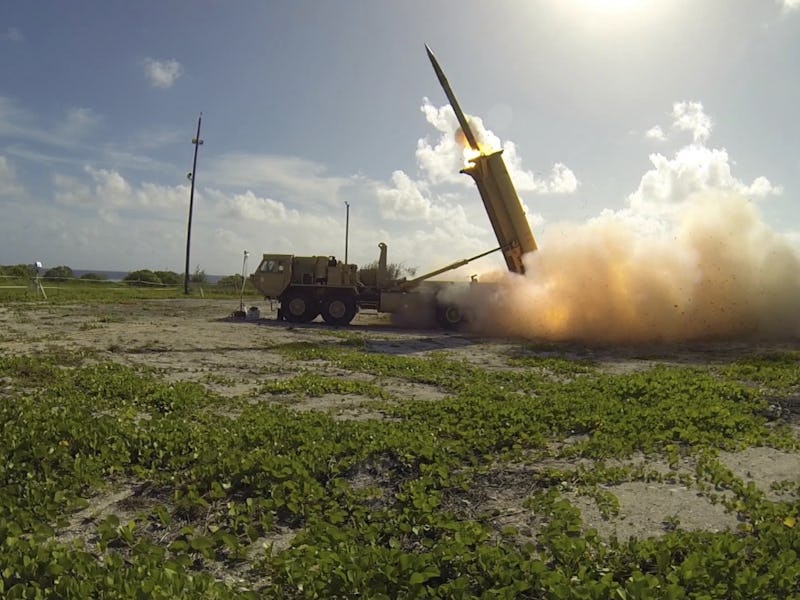America’s THAAD Missile Defense System is an $800 Million Moonshot
There's good news and bad news.

On Tuesday, the U.S. government announced that it had brought a new weapon online in the perennial battle of macho and missile tests with North Korea. The Terminal High-Altitude Area Defense system, or THAAD, is a ballistic missile defense system designed to shoot incoming missiles out of the sky with other, smaller missiles before they can impact and kill thousands of people. Or at least that’s what it’s supposed to do, but in reality, the THAAD is mostly untested in the rigors of a full ballistic missile war — which looms closer than it has in decades due to increased tensions between President Donald Trump’s administration and North Korea.
The THAAD is meant to intercept short and medium-range ballistic missiles (essentially rockets with a destructive conventional, nuclear, or chemical warhead) before they can impact their targets. The system uses several heavy multi-wheeled vehicles that include a radar truck, a command truck, and the counter-missile launcher itself, which shoots out a ballistic missile that has to actually collide with the incoming threat, instead of just detonating near enough to the enemy weapon to blow it up (the THAAD’s missiles don’t even have warheads).
See missile, shoot missile.
The THAAD has been in development since the mid-nineties and saw its first successful test in June of 1999. Since then, it’s been tested over a dozen more times, at some points against two missiles at once, and usually against short-range missiles. In 2012, it was a joint exercise with the military’s AEGIS missile defense system and other assets, in which the THAAD helped shoot down five missiles. Here’s a double-missile test in 2015, if you want to see what it looks like:
The problem is, North Korea has a lot more than five missiles. The THAAD has an effective range of about 125 miles, but North Korean analysis site 38 North predicts it would take two THAAD launchers to adequately cover a variety of attacks from North Korean batteries.
38 North's projections of the THAAD's radar coverage.
As you can see in 38 North’s projections, the THAAD is pointed at a much larger country than North Korea as well. China is pissed about THAAD’s presence in South Korea, saying it disrupts the local national security balance because it could have unknown capabilities. Local residents don’t like it either — the system is currently parked on a golf course at a country club in Seongju County, North Gyeongsang Province. The area is a sleepy mountain community that ordinarily would not be a high-priority target in the case of a full-on shooting war, and the locals are understandably pretty miffed that the U.S. and South Korean militaries have stashed an $800,000,000 missile defense system on their immaculate 18-hole country club resort, painting a big old bulls-eye on the spot for a prospective North Korean attack.
The biggest worry, of course, is a common one with ballistic missiles and missile systems alike. We’ve never been involved in a full-on ICBM-shooting war, and the equipment designed for one has therefore never really been tested. The THAAD is, in testing, pretty good at shooting down short and intermediate-range missiles, but what if it comes across something launched from much further away? We really don’t know, but it appears the Trump administration and military leadership has decided to have it locked and loaded just in case.